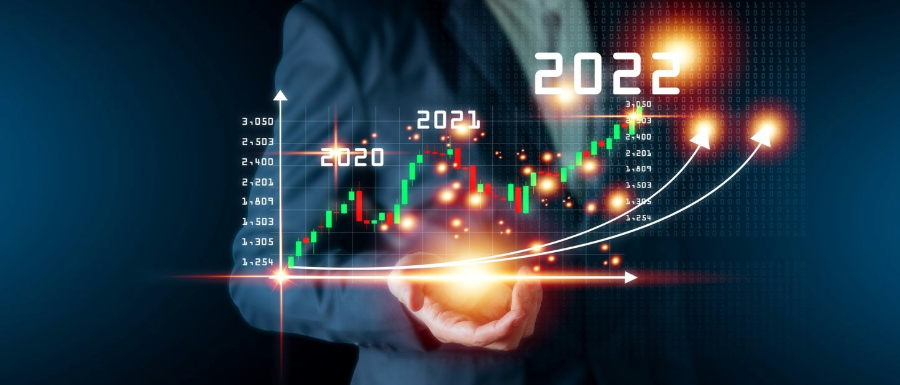20 Handy Reasons For Choosing Ai In Stock Markets
20 Handy Reasons For Choosing Ai In Stock Markets
Blog Article
Top 10 Ways To Automate Trading And Regular Monitoring Ai Trading In Stocks, From Penny Stocks To copyright
Monitoring trades regularly and automating trades is essential to optimize AI stocks, particularly for markets that are fast-moving like the penny stock market and copyright. Here are 10 ideas for automating trades as well as keeping track of your performance on a regular basis.
1. Clear Trading Goals
TIP Make sure you know your goals for trading. These include risk tolerance levels and return expectations, as well as preference for certain assets (penny stock or copyright, both) and much more.
What's the reason? Clear objectives will guide the selection of AI algorithms, risk-management guidelines and trading strategies.
2. Trading AI Platforms that are Reliable
TIP: Choose AI trading platforms that allow full integration and automation to your broker or exchange. Examples include:
For Penny Stocks: MetaTrader, QuantConnect, Alpaca.
For copyright: 3Commas, Cryptohopper, TradeSanta.
The reason: A robust platform with strong execution capabilities is essential to achieving success through automation.
3. Customizable Trading algorithms are the primary goal
Use platforms which allow you to create or customize trading algorithms that are customized to your particular method (e.g. mean reversion, trend-following).
The reason: The strategy is adapted to your style of trading.
4. Automate Risk Management
Create risk management tools that are automated like stop loss orders, trailing stops and take-profit levels.
Why: These safeguards are designed to protect your investment portfolio from large losses. This is particularly important when markets are volatile.
5. Backtest Strategies Before Automation
Tip: Test your automated strategies using historical data (backtesting) to evaluate performance prior to launching.
The reason: Backtesting can help determine if a plan is viable, thus reducing the risk of a poor performance on live markets.
6. Monitor performance regularly and make adjustments settings
Tips: Even though trading could be automated, you should monitor the performance consistently to detect any issues.
What to monitor What to watch for: Loss, profit, slippages, and whether or not the algorithm is aligned with market conditions.
Why: A continuous monitoring process allows you to make adjustments in time as market conditions change. Then you can be sure that your plan remains effective.
7. Implement adaptive algorithms
Tip: Use AI tools to modify trading parameters in real-time in response to the data.
Why: Markets evolve and adaptable algorithms are able to optimize strategies for penny stocks and copyright to align with new patterns or the volatility.
8. Avoid Over-Optimization (Overfitting)
Beware of over-optimizing a system based upon past data. This could lead to overfitting, where the system is performing better on backtests than under real-world conditions.
The reason is that overfitting reduces the strategies generalization to market conditions in the future.
9. Use AI to detect market anomalies
Make use of AI to monitor abnormal patterns in the market and also to identify irregularities in the data.
What's the reason? By identifying these indicators in the early stages, you can alter your automated strategies ahead of a major market shift.
10. Integrate AI into regular notifications and alerts
Tip: Set alerts that are real-time to be alerted of important market events and trading executions as well as changes to the algorithm's performance.
The reason: Alerts notify you about market developments and permit quick manual intervention (especially in volatile markets such as copyright).
Bonus Cloud-based Solutions are Scalable
Tip - Use cloud trading platforms to boost scaling. They're more efficient and let you run multiple strategies simultaneously.
Cloud solutions let your trading system run 24 hours a days and 365 days of the year and at no cost. They are particularly useful for copyright markets since they don't close.
Automating your trading strategies and ensuring regular monitoring will enable you to benefit from AI powered stock and copyright trading by reducing risk and improving your performance. Check out the most popular ai penny stocks hints for blog advice including copyright predictions, penny ai stocks, ai stock price prediction, best ai penny stocks, ai stock market, ai for trading, ai predictor, best ai stocks, ai stock price prediction, best ai trading bot and more. 
Top 10 Tips For Ai Stock Pickers And Investors To Pay Attention To Risk Metrics
By paying attention to risk metrics and risk metrics, you can be sure that AI stocks, forecasts, as well as strategies for investing and AI are able to withstand market volatility and well-balanced. Understanding the risk you face and managing it will aid in avoiding huge losses while also allowing you to make informed and informed decisions. Here are 10 best tips for integrating AI investing strategies and stock-picking with risk metrics:
1. Understand Key Risk Metrics Sharpe Ratio (Sharpe Ratio), Max Drawdown and Volatility
Tip: To assess the performance of an AI model, pay attention to key metrics such as Sharpe ratios, maximum drawdowns and volatility.
Why:
Sharpe ratio is a measure of return relative to risk. A higher Sharpe ratio indicates better risk-adjusted performance.
Maximum drawdown is the most significant peak-to-trough loss and helps you understand the potential for massive losses.
Volatility is a measure of the market's volatility and fluctuation in price. Low volatility indicates greater stability, while high volatility indicates more risk.
2. Implement Risk-Adjusted Return Metrics
Tip: To evaluate the performance of your AI stock selector, use risk-adjusted metrics such as the Sortino (which is focused primarily on risk associated with the downside) and Calmar (which evaluates the returns with the maximum drawdown).
Why: These metrics measure the extent to which your AI models perform in relation to the risk they take on. They let you assess whether the ROI of your investment is worth the risk.
3. Monitor Portfolio Diversification to Reduce Concentration Risk
Tips: Make use of AI to help you optimize and manage your portfolio's diversification.
Why: Diversification can reduce concentration risk. Concentration happens when a portfolio becomes too dependent on a single stock market, sector or even sector. AI can assist in identifying connections between assets and make adjustments to allocations to minimize the risk.
4. Monitor beta to determine the market's sensitivity
Tips: You can utilize the beta coefficient to measure the sensitivity to the overall market movements of your stocks or portfolio.
Why is that a portfolio with a Beta higher than 1 is volatile. A beta less than 1 suggests a lower volatility. Knowing the beta helps you tailor your risk exposure according to the market's fluctuations and the risk tolerance of the investor.
5. Set Stop-Loss and Take-Profit levels Based on risk tolerance
To control the risk of losing money and to lock in profits, establish stop-loss or take-profit thresholds with the help of AI models for risk prediction and forecasts.
What are the reasons: Stop loss levels are there to guard against losses that are too large. Take profits levels exist to lock in gains. AI can identify the most optimal levels of trading based on historical volatility and price action and maintain the balance between risk and reward.
6. Monte Carlo simulations may be used to assess the risk involved in various situations
Tip Use Monte Carlo simulations to model the range of possible portfolio outcomes under different markets and risk factors.
Why is that? Monte Carlo simulations are a method to gain a probabilistic picture of the future performance of a portfolio. It helps you plan more effectively for risky scenarios like high volatility and massive losses.
7. Assess the correlations between them to determine systemic and non-systematic risk
Tips. Make use of AI to analyze the correlations between the assets in your portfolio and market indexes. You will be able to identify systematic risks as well as unsystematic ones.
What's the reason? While systemic risks are common to the entire market (e.g. the effects of economic downturns conditions) while unsystematic risks are specific to assets (e.g. issues relating to a specific business). AI can lower unsystematic risk by recommending less correlated investments.
8. Check Value At Risk (VaR) and determine the amount of potential losses
Tips: Use Value at Risk (VaR) models to determine the potential loss in the portfolio within a specific time period, based upon a given confidence level.
Why: VaR is a way to have a clearer idea of what the worst-case scenario might be in terms of loss. This lets you evaluate your risk-taking portfolio under normal conditions. AI can assist you in calculating VaR dynamically, to adapt to fluctuations in market conditions.
9. Set dynamic risk limits based on Market Conditions
Tips: Make use of AI to dynamically adjust risk limits in response to the volatility of the market as well as economic and stock-related correlations.
Why is that dynamic risk limits protect your portfolio from over-risk in times of high volatility or uncertainty. AI analyzes data in real time and adjust your portfolio to ensure that your risk tolerance remains within acceptable limits.
10. Machine learning can be used to predict tail events as well as risk variables.
TIP: Use machine learning algorithms based on sentiment analysis and data from the past to identify extreme risks or tail-risks (e.g. market crashes).
The reason: AI helps identify patterns of risk that conventional models might not be able to recognize. They also can predict and prepare you for rare however extreme market conditions. Investors can prepare proactively for the possibility of catastrophic losses using tail-risk analysis.
Bonus: Review risk metrics regularly with the changing market conditions
Tips. Review and update your risk assessment as market conditions change. This will enable you to keep pace with changing economic and geopolitical developments.
Why? Market conditions are always changing. Letting outdated models for risk assessment can result in incorrect assessment. Regular updates make sure that AI models are regularly updated to reflect market's current trends and adjust to any new risk factors.
Conclusion
By monitoring the risk indicators carefully and incorporating these metrics into your AI investment strategy including stock picker, prediction models and stock selection models, you can create an intelligent portfolio. AI provides powerful tools for assessing and manage risk. Investors can make data-driven, informed decisions that balance the potential return while allowing for acceptable levels of risk. These guidelines will enable you to create a robust management plan and ultimately improve the stability of your investment. Check out the top rated free ai trading bot info for website tips including ai for investing, trade ai, trading chart ai, investment ai, stock ai, ai for stock trading, ai copyright trading bot, ai trader, best ai trading app, ai trader and more.